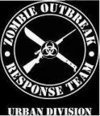From strategypage.com
March 25, 2011: The weight problem has reached crises proportions within the U.S. Army infantry. No, not the weight of the troops. Infantry soldiers are rarely overweight. But they are carrying more and more weight, and it's having an adverse effect on performance, morale and physical fitness. Troops are frequently carrying 50-60 kg (110-132 pounds). That means they cannot move as fast as the enemy, and when they try to they tire faster and get frustrated, and often injured (by the enemy or by the sheer physical stress of hustling with all that weight on them.) Long term, troops are developing the kind of physical stress injuries athletes are prone to (eventually) when they overdo it.
The problem has been around for a long time, and the senior commanders, and the various procurement bureaucracies that supply essential equipment, have not been able to make the kind of effort that would solve the problem. The procurement bureaucrats all see their items as essential, and making them lighter is not a high priority. The brass insist on a lot of stuff being carried mainly so there will be no media blowback if someone, somewhere, complains that troops died because they lacked a particular item.
It's not that the army doesn't try. Two years ago, a battalion in Afghanistan was equipped with the lightest substitutes the army could find for body armor, packs, boots and other gear, while simply leaving some stuff out entirely. This resulted in 10 kg (about 22 pounds), depending on the mission, being removed from the soldiers combat load. The effectiveness of the battalion was monitored, along with the injury and casualty rates. The troops (including officers and NCOs) were interviewed, to get a better idea of just what happens, good and bad, when the weight is reduced. After all that, the brass saw the results and realized that they had a long way to go to get the load permanently reduced, a lot. The troops liked the lighter weight, but some of the brass and bureaucracies were not happy with the exposure (to accusations of "not doing enough for the troops.") A major, and real, effort to reduce the weight is still blocked by officers and officials more concerned with their careers and reputations than with the welfare of the troops.
The biggest, and heaviest, problem is body armor. Although the new armor offers better protection, it is heavier and bulkier, thus inducing fatigue and hindering mobility. This often led to battlefield situations where a less tired, and more agile, infantryman could have avoided injury. Military and political leaders usually do not appreciate this angle. But the troops do, as it is a matter of life and death for them.
Senior commanders are under a lot of pressure to keep friendly casualties down, so they tend to insist that the troops wear all their armor all the time. Despite this, some subordinate commanders look the other way when troops shed their armor temporarily to get some needed speed. The new protective vests now have a quick release feature, that makes it easier to get the vest off, and back on again.
Many soldiers and marines point out that the SOCOM operators (Special Forces and SEALs) will sometimes go into action without their protective vests. Again, that is done because completion of the mission is more important than covering your ass when a reporter goes after you for "unnecessary casualties." Many of the troops are willing to take the risk, because they believe, for example, that taking down a sniper when you have the chance, is worth it. If you don't catch the guy, he will be back in action the next day, killing Americans.
Currently, the lightest load carried, the "fighting load" for situations where the troops were sneaking up on the enemy and might be involved in hand-to-hand combat, is 28.6 kg (63 pounds). The "approach march load," for when infantry were moving up to a position where they would shed some weight to achieve their "fighting load", is 46 kg (102 pounds). The heaviest load, 60 kg (132 pounds), is the emergency approach march load, where troops had to move through terrain too difficult for vehicles. As in the past, the troops often ignored the rules and regulations and dumped gear so they could move, or keep moving.
In Afghanistan, the problem is made worse by the high altitudes (up to 5,000 meters) the troops often operate at. The researchers found that in Afghanistan, even though the infantry were in excellent physical shape, troops would sweat nearly 590 ml (20 ounces) of fluid an hour while marching at high altitudes in bright sunlight in moderate temperatures. That meant more weight, in water, had to be found to keep these guys going.
A lot of the weight carried is essential stuff. Weapons, for example. The Army saved about a kilogram (two pounds) in the 1960s when they switched from the M-14 rifle to the M-16. A lot of weight was saved in ammo carried as well, because a hundred M-16 bullets weighed two pounds less than a hundred 7.62mm M-14 ones. Troops usually carry 200-300 rounds of rife ammo with them. Plastic canteens replaced metal ones and lighter sleeping bags showed up, as well as lighter clothing. Lighter food (pouches of MREs instead of cans of C Rations). But heavier stuff was added, like the 7.7 kg (17 pound) "Interceptor" bullet proof vest and the heavier Kevlar helmet. Special Forces troops often go into action without body armor, and keep the load under 18 kg (40 pounds). But that's only in those situations where the Special Forces calculate that speed and achieving surprise are worth more than the protection the vests provide. Most troops do not have that option, but they do need less weight on their back to remain competitive with the enemy they fight in rural Afghanistan. With enough development effort (which is expensive), the weight problem could be solved. It also takes will and cooperation on the part of the senior commanders and procurement bureaucrats. Thus it's possible. But so far, it's not been done.
skip to main |
skip to sidebar

Life is exquisite, of great beauty, keenly felt.
A liberal is a person who is active on behalf of people he doesn’t care about, in order to control people he hates.
Liberalism: Ideas So Good, They’re Mandatory.
“There is no greater impediment to the advancement of knowledge than the ambiguity of words.”
-- Thomas Reid
-- Thomas Reid
"All animals are equal, but some animals are more equal than others." Animal Farm
"Doublethink" "to...be conscious of complete truthfulness while telling carefully-constructed lies...to repudiate morality while laying claim to it...."
Of all tyrannies, a tyranny sincerely exercised for the good of its victims may be the most oppressive. It would be better to live under robber barons than under omnipotent moral busybodies. The robber baron's cruelty may sometimes sleep, his cupidity may at some point be satiated; but those who torment us for our own good will torment us without end for they do so with the approval of their own conscience.
-CS Lewis
-CS Lewis
"Among the many misdeeds of the British rule in India, history will look upon the act of depriving a whole nation of arms, as the blackest."- Mahatma Gandhi
"If you have no capacity for violence then you are a healthy productive citizen: a sheep. If you have a capacity for violence and no empathy for your fellow citizens, then you have defined an aggressive sociopath–a wolf. But what if you have a capacity for violence, and a deep love for your fellow citizens? Then you are a sheepdog, a warrior, someone who is walking the hero’s path. Someone who can walk into the heart of darkness, into the universal human phobia, and walk out unscathed."-The Bulletproof Mind
"Those who are too smart to engage in politics are punished by being governed by those who are dumber."
“Statistics are like bikinis. What they reveal is suggestive, but what they conceal is vital.” Aaron Levenstein
Links you may be interested in
- Constitution of the U.S. with expert analysis
- Newsbusters-exposes media bias
- Drudge Report
- Realclearpolitics-polls and articles
- 'BigHollywood'-culture, movies, reviews from conservatives
- IMDB-A Vast Movie&Actor Data Base
- rottentomatoes-movie reviews and critics
- themoviespoiler-Gives Movie Endings and Plot
- BoxOfficeMojo-Movie Money Charts
- Truth or Fiction-check internet rumors
- strategypage-Military News,Photos, Video
- Dealnews-finds & lists sale items
- giveawayoftheday-Free Software
- localteaparties
- U.S. Congregational Membership: Maps
- Catholics & Evangelicals: doctrinal and moral/political views
- The Cigarette Smoking Blog
- Rachel (Silent spring) Was Wrong
"Who controls the past controls the future. Who controls the present controls the past." 1984
“Give me four years to teach the children and the seed I have sown will never be uprooted.” - Lenin
"You must remember that of all the arts, for us, the most important is cinema.” - Lenin
“Movie Stars. Is there anything they DON’T know?”- Homer Simpson
"Don't you see that the whole aim of Newspeak is to narrow the range of thought?"
By 2050 earlier, probably -- all real knowledge of Oldspeak will have disappeared. The whole literature of the past will have been destroyed. Chaucer, Shakespeare, Milton, Byron -- they'll exist only in Newspeak versions, not merely changed into something different, but actually changed into something contradictory of what they used to be. Even the literature of the Party will change. Even the slogans will change. How could you have a slogan like "freedom is slavery" when the concept of freedom has been abolished? The whole climate of thought will be different. In fact there will be no thought, as we understand it now. Orthodoxy means not thinking -- not needing to think. Orthodoxy is unconsciousness.' Orwell-1984
By 2050 earlier, probably -- all real knowledge of Oldspeak will have disappeared. The whole literature of the past will have been destroyed. Chaucer, Shakespeare, Milton, Byron -- they'll exist only in Newspeak versions, not merely changed into something different, but actually changed into something contradictory of what they used to be. Even the literature of the Party will change. Even the slogans will change. How could you have a slogan like "freedom is slavery" when the concept of freedom has been abolished? The whole climate of thought will be different. In fact there will be no thought, as we understand it now. Orthodoxy means not thinking -- not needing to think. Orthodoxy is unconsciousness.' Orwell-1984
"Diversity Is Our Strength", a modern newspeak slogan issued on posters in government offices nationally, in our own modern (post 60s) America. WM
"The constitution was designed as an unbreakable chain to bind government and keep the people free, but modern liberalism has created formulas to turn those chains into a creeping vine that clawingly seeks the people and enslaves them while loosing and releasing its grip on the government." WM
"It isn't what Americans don't know that is the problem, it is the false information that they are taught, that attacks our fabric as a nation and our future as a people."- WM
“Tolerance is the last virtue of a depraved society. When an immoral society has blatantly and proudly violated all the commandments, it insists upon one last virtue, tolerance for its immorality. It will not tolerate condemnation of its perversions. It creates a whole new world in which only the intolerant critic of intolerable evil is evil.” Hutton Gibson
"Duty ... Honor ... Country... Those three hallowed words reverently dictate what you ought to be, what you can be, what you will be. They are your rallying points: to build courage when courage seems to fail; to regain faith when there seems to be little cause for faith; to create hope when hope becomes forlorn." Douglas MacArthur
For what is a man profited, if he shall gain the whole world, and lose his own soul? Matthew 16:26
“Greater love hath no man than this, that a man lay down his life for his friends.” John 15:13
"People sleep peaceably in their beds at night only because rough men stand ready to do violence on their behalf."- G. Orwell
Switzerland is armed to the teeth.
Romney can not talk about being governor because he was a failure.
Romney can not talk about the Olympics because he took $600mil taxpayers money to fix it.
He can’t talk about his belief in mormonISM because it is anti-Christian.
He could talk about his time at Bain, whether he was successful is your point of view.
All he can really do is say “I am not Obama and Obama sucks”.
Romney can not talk about the Olympics because he took $600mil taxpayers money to fix it.
He can’t talk about his belief in mormonISM because it is anti-Christian.
He could talk about his time at Bain, whether he was successful is your point of view.
All he can really do is say “I am not Obama and Obama sucks”.
"We don't intend to turn the Republican Party over to the traitors in the battle just ended. We will have no more of those candidates who are pledged to the same goals as our opposition and who seek our support. Turning the Party over to the so-called moderates wouldn’t make any sense at all."- Ronald Reagan
Ronald Reagan's Thoughts in quotes
"Man is not free unless government is limited."
"Concentrated power has always been the enemy of liberty."
“The cultural environment for a human holocaust is present whenever any society can be misled into defining individuals as less than human and therefore devoid of value and respect.”
"Abraham Lincoln recognized that we could not survive as a free land when some men could decide that others were not fit to be free and should therefore be slaves. Likewise, we cannot survive as a free nation when some men decide that others are not fit to live and should be abandoned to abortion or infanticide."
"I notice that all those people who favor abortion have already been born."
"We should measure welfare's success by how many people leave welfare, not by how many are added."
"Freedom is never more than one generation away from extinction. We didn't pass it to our children in the bloodstream. It must be fought for, protected, and handed on for them to do the same."
"Welfare's purpose should be to eliminate, as far as possible, the need for its own existence."
"Freedom prospers when religion is vibrant and the rule of law under God is acknowledged."
"Government exists to protect us from each other. Where government has gone beyond its limits is in deciding to protect us from ourselves."
"Government's view of the economy could be summed up in a few short phrases: If it moves, tax it. If it keeps moving, regulate it. And if it stops moving, subsidize it."
"The problem is not that people are taxed too little, the problem is that government spends too much."
"Republicans believe every day is the Fourth of July, but the democrats believe every day is April 15."
"I've never been able to understand why a Republican contributor is a 'fat cat' and a Democratic contributor of the same amount of money is a 'public-spirited philanthropist'."
"Mr Gorbachev, tear down this wall!"
"Without God, democracy will not and cannot long endure."
"They say the world has become too complex for simple answers. They are wrong."
"Don't be afraid to see what you see." Ronald Reagan
"Concentrated power has always been the enemy of liberty."
“The cultural environment for a human holocaust is present whenever any society can be misled into defining individuals as less than human and therefore devoid of value and respect.”
"Abraham Lincoln recognized that we could not survive as a free land when some men could decide that others were not fit to be free and should therefore be slaves. Likewise, we cannot survive as a free nation when some men decide that others are not fit to live and should be abandoned to abortion or infanticide."
"I notice that all those people who favor abortion have already been born."
"We should measure welfare's success by how many people leave welfare, not by how many are added."
"Freedom is never more than one generation away from extinction. We didn't pass it to our children in the bloodstream. It must be fought for, protected, and handed on for them to do the same."
"Welfare's purpose should be to eliminate, as far as possible, the need for its own existence."
"Freedom prospers when religion is vibrant and the rule of law under God is acknowledged."
"Government exists to protect us from each other. Where government has gone beyond its limits is in deciding to protect us from ourselves."
"Government's view of the economy could be summed up in a few short phrases: If it moves, tax it. If it keeps moving, regulate it. And if it stops moving, subsidize it."
"The problem is not that people are taxed too little, the problem is that government spends too much."
"Republicans believe every day is the Fourth of July, but the democrats believe every day is April 15."
"I've never been able to understand why a Republican contributor is a 'fat cat' and a Democratic contributor of the same amount of money is a 'public-spirited philanthropist'."
"Mr Gorbachev, tear down this wall!"
"Without God, democracy will not and cannot long endure."
"They say the world has become too complex for simple answers. They are wrong."
"Don't be afraid to see what you see." Ronald Reagan
Ronald Reagan Speaks Out Against Socialized Medicine in 1961 !
Thank you President Reagan
Obama “I don't want them punished with a baby.”
Obama's civilian "National Security Force"
Obama's ignorance is profound, his own birth date was 1961 (the Selma march was in 1965!)
Obama bowing to Japanese emperor, over and over
president obama- our brave "navy corpseman"!??
Obama visits all 57 to 60 states (who knows?)
Chris Matthews will use his show to serve Obama
biden 1929 FDR depression "Television" and 1929 President FDR?
Palin: You can see Russia from land in Alaska, which is correct of course
Greatest movie quote ever
Women can't add, he once said, jokingly.
When I asked him what he meant, he said, For them, one and one and one and one don't make four.What do they make? I said, expecting five or three.Just one and one and one and one, he said.
--Margaret Atwood, A Handmaid’s Tale
--Margaret Atwood, A Handmaid’s Tale
FREEDOM
The philosopher Diogenes was eating bread and lentils for his supper. He was seen by the philosopher Aristippus, who said, “If you would learn to be more subservient to the king, you would not have to live on lentils.” Diogenes replied, “Learn to live on lentils and you will not have to cultivate the king.”
I have learned in whatever situation I am to be content. I know how to be brought low, and I know how to abound. In any and every circumstance, I have learned the secret of facing plenty and hunger, abundance and need. I can do all things through him who strengthens me (Philippians 4:11-13).
CLICK ON "OLDER POSTS" FOR NEXT PAGE


























































No comments:
Post a Comment